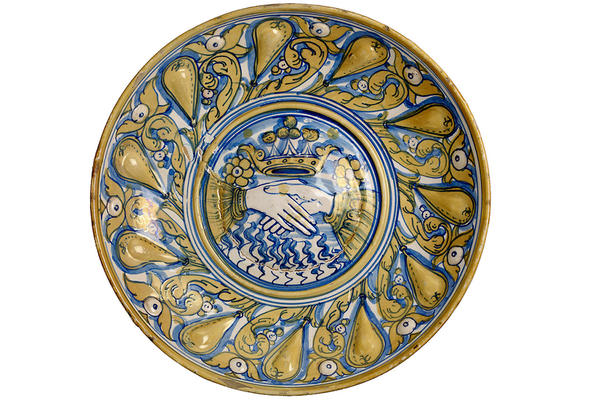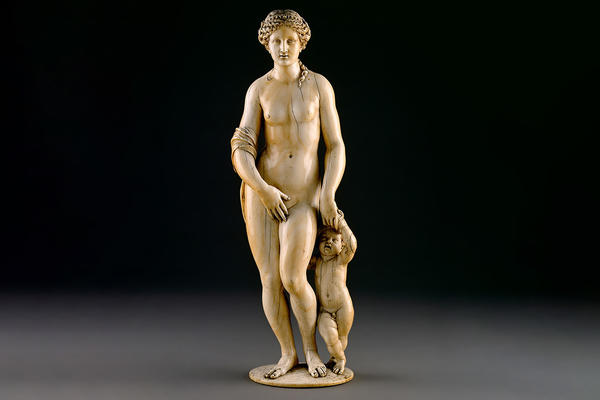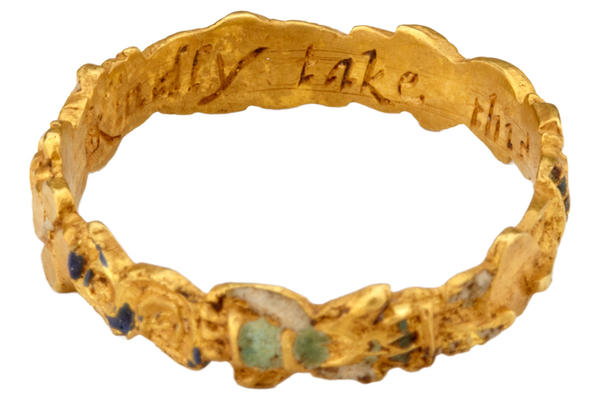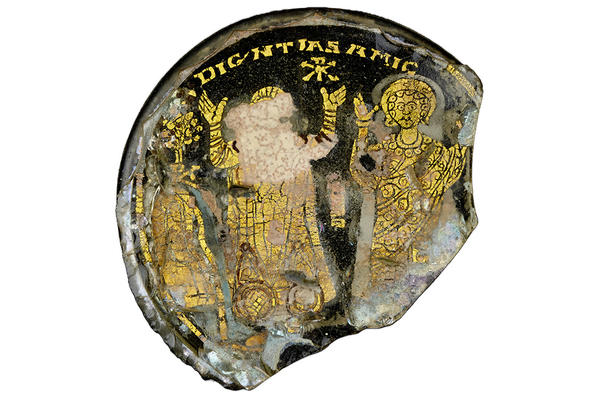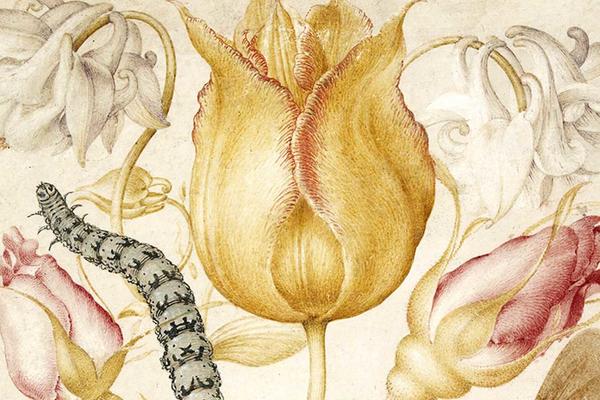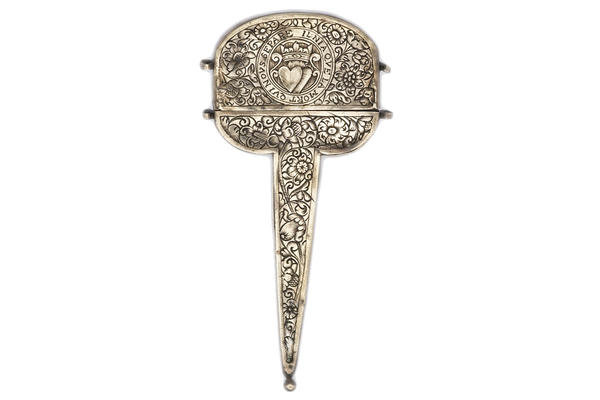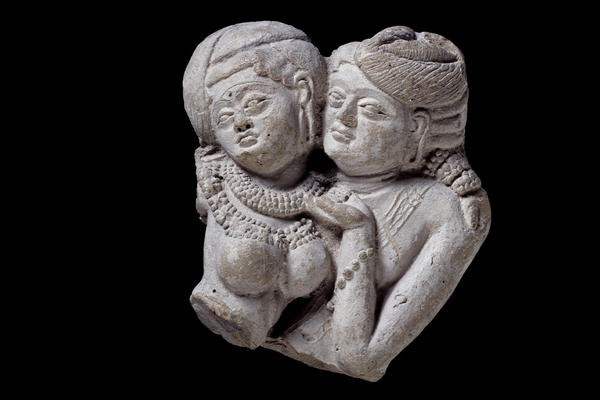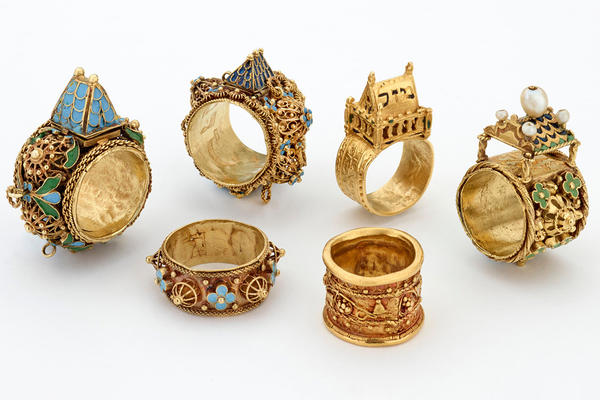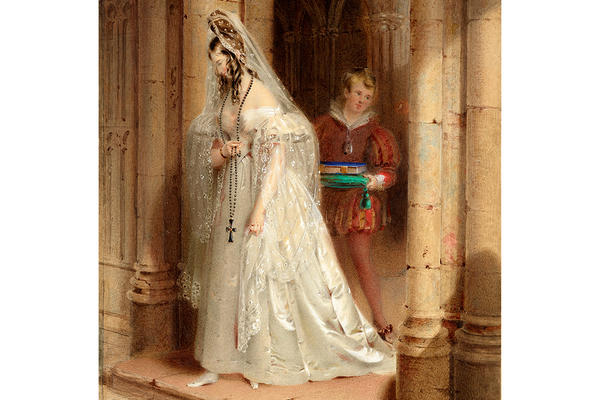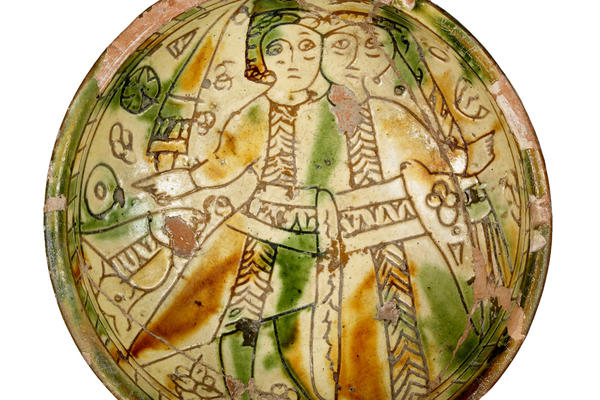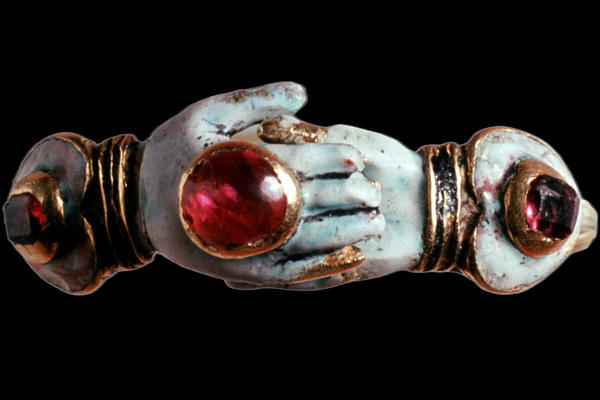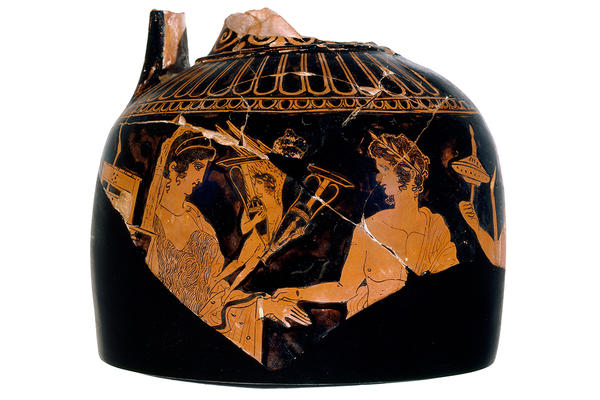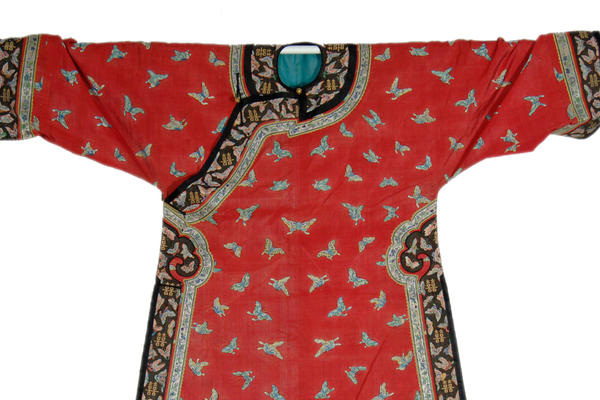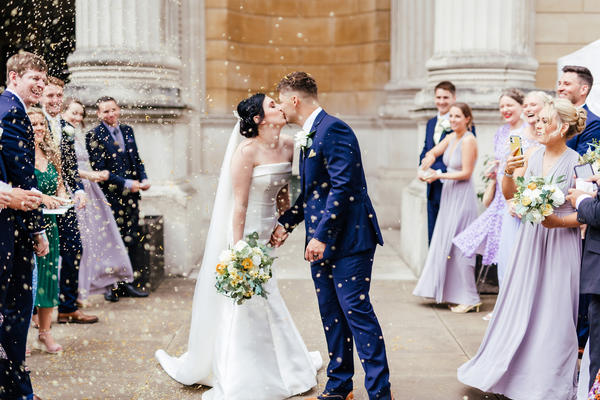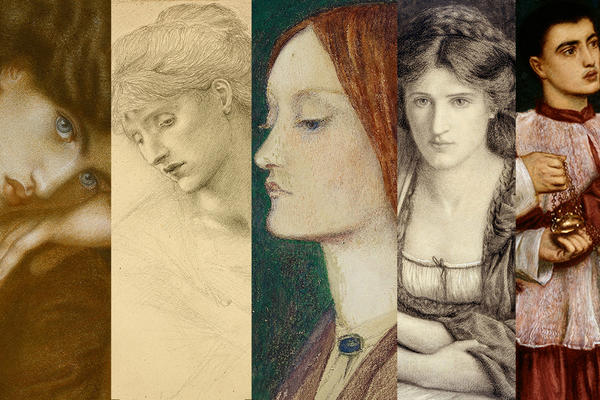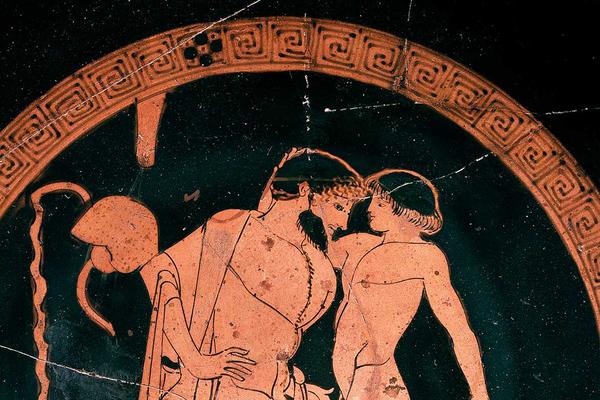LOVE, FRIENDSHIP & ROMANCE
From love scenes to wedding rings, discover objects of love, friendship and romance from the collections, to mark the month of Valentine's Day.
Many of them are on display in the Museum. Click on the image for gallery details if they're not given.
5-minute read
OBJECTS OF LOVE AND FRIENDSHIP
Renaissance Fede friendship bowl
Statue of Venus with Cupid
Lovers' posy ring
Ancient Roman pottery fragments of a drinking glass, showing friends
Arrangement of Flowers with insects friendship sheet (detail)
Ornate silver scissors case with love decorations
Fragmentary plaque of upper halves of an amorous couple
LOVE SCENES IN OUR COLLECTIONS
The Triumph of Love
By Titian, c. 1545
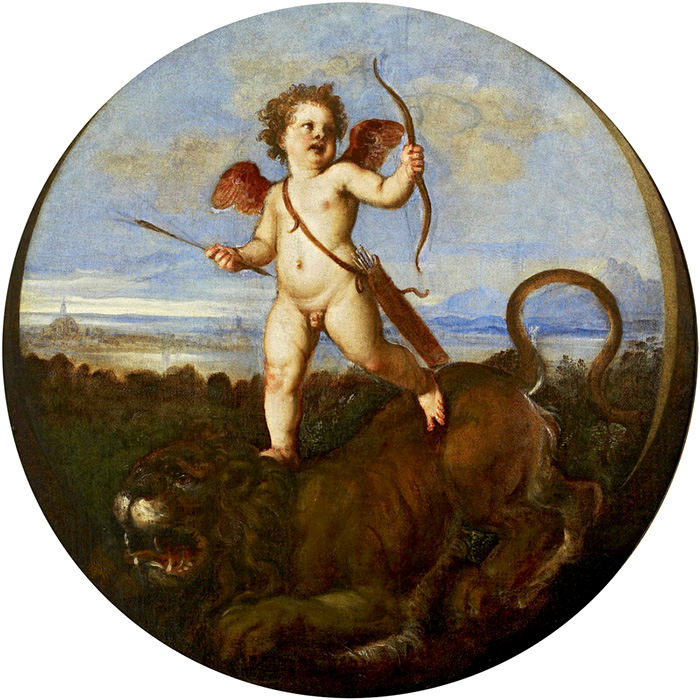
The power of true love over all other passions is celebrated here, as Cupid, the god of love, balances on the back of an angry lion in this evocative painting by Titian. The fantasy lagoon landscape represents a Venetian setting.
Titian painted this around 1545 for Gabriele Vendramin, a famous Venetian collector whose collection included medals, antiquities, drawings and paintings.
Grime and over-painting had concealed its identity as a 'cover' for a portrait in Vendramin's collection, and it only recently regained its identity as a Titian after decades of obscurity.
See it on display in the Italian Renaissance Gallery 43, Level 2.
Baz Bahadur and Rupmati
Kulu, northern India, gouache with gold and silver on paper, c. 1720
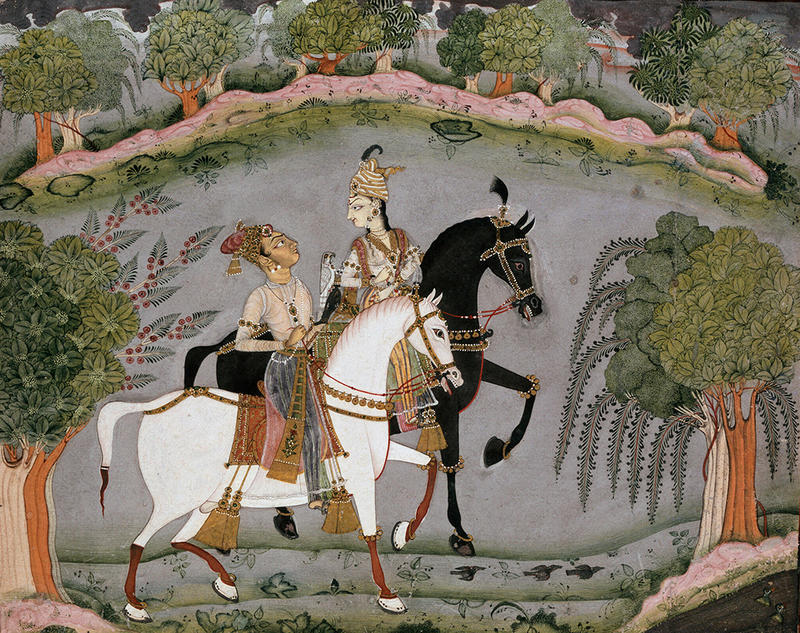
The love of the 16th-century Muslim prince Bāz Bahādur and his Hindu mistress Rūpmatī was a popular theme of poetry and song in Mughal India. During the 18th century the legendary couple were frequently depicted by artists at the provincial Mughal courts and at the Rajput courts of the Punjab Hills, especially Kulu and Garhwal. They are most often shown riding together, gazing into one another’s eyes, either in the stillness of a moonlit night, or as here, on a hawking expedition. Such romantic scenes had a strong appeal for the Muslim and Hindu nobility alike, for whom the convention of purdah allowed little association between the sexes.
In this painting the lovers’ wild-eyed, mettlesome horses advance in step, while Rūpmatī turns in the saddle to gaze at the spellbound Bāz Bahādur. The figures are silhouetted against a cool grey ground, around which tightly drawn bushy trees cluster in pairs entwined with sinuous creepers. The conventional scene of the couple riding together is imbued with a certain eery tension often found in Kulu painting.
Not currently on display
EA1958.307
Acme and Septimius
By Frederic Leighton, 1858
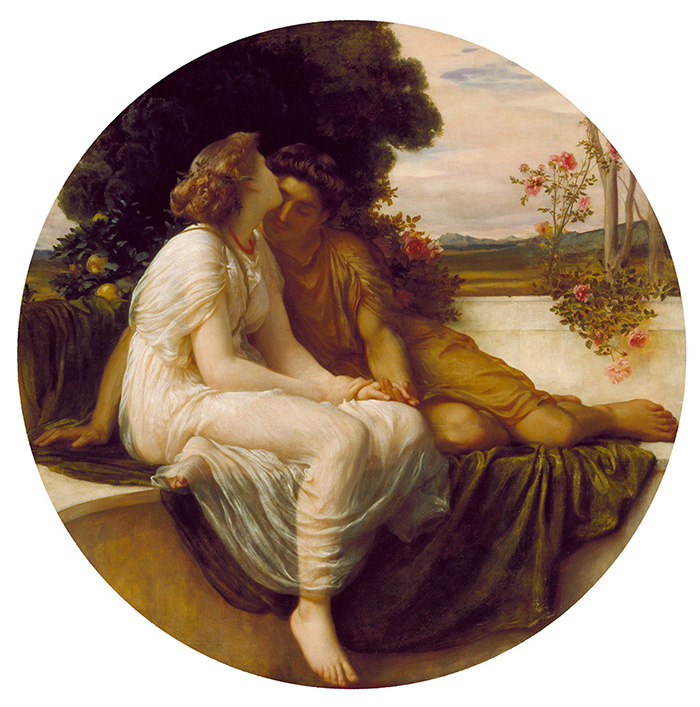
The subject of this scene of idyllic love is taken from a love poem by the Roman poet Catullus. The background includes the rose, a traditional symbol of love, and orange trees. Painted by English artist Frederic Leighton (1830–1896), it was exhibited at the Royal Academy in 1868.
Leighton was one of the dominant figures of late Victorian art and specialised in classical themes. He travelled widely in Europe as a boy and his artistic education was gained in Frankfurt, Rome, and Paris. In 1859 he settled in England, by which time he had made a name for himself and had works shown at the Royal Academy.
On display, Level 3M, Pre-Raphaelites Gallery 66
WA1978.7
The Garden of Kama (or Love) illustrations
Illustrated by Byam Shaw, 1914
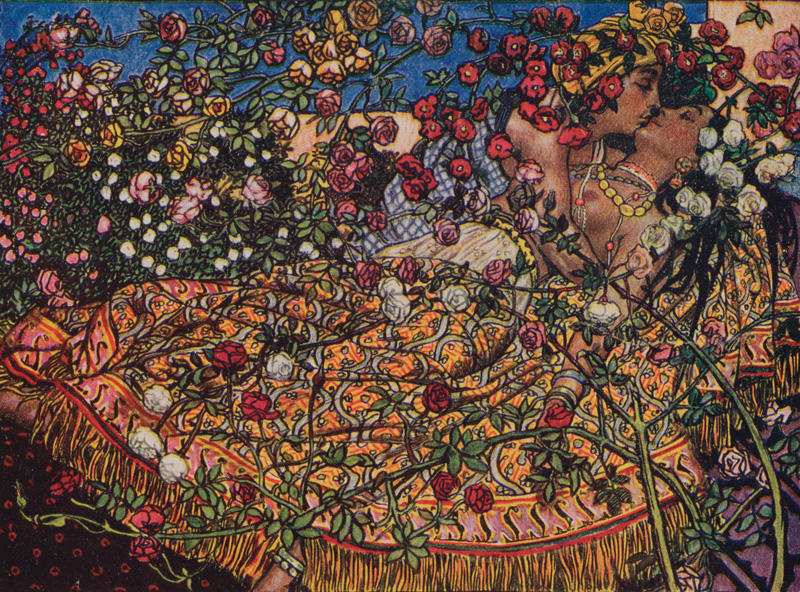
This illustration is from 'The Garden of Kama and Other Love Lyrics from India,' written by Adela Florence Nicolson (1865-1904) under the pseudonym Laurence Hope. It is a book of verse published as a supposed translation from Indian texts, but in fact is written by Nicolson.
The book was illustrated by British artist John Byam Liston Shaw (1872-1919). It contains 24 full page colour plates in total, reproducing Byam Shaw's watercolours. His rich use of colour emphasises the intended perception of exoticism in the poems. This image accompanies ‘Song by Gulbaz’ which includes the lines:
'Young love, walking softly, found her, in the scented, shady closes,
Threw his ardent arms around her, kissed her lips beneath the roses.'
Byam Shaw was born in Madras but his family returned to England in 1878. He was influenced by the Pre-Raphaelites. He took many of his subjects from the poems of Dante Gabriel Rossetti (1828-1882).
View the book by appointment in the Western Art Print Room.
Lovers Fleeing Across the Moor
By Utagawa Kuniyoshi, 1852
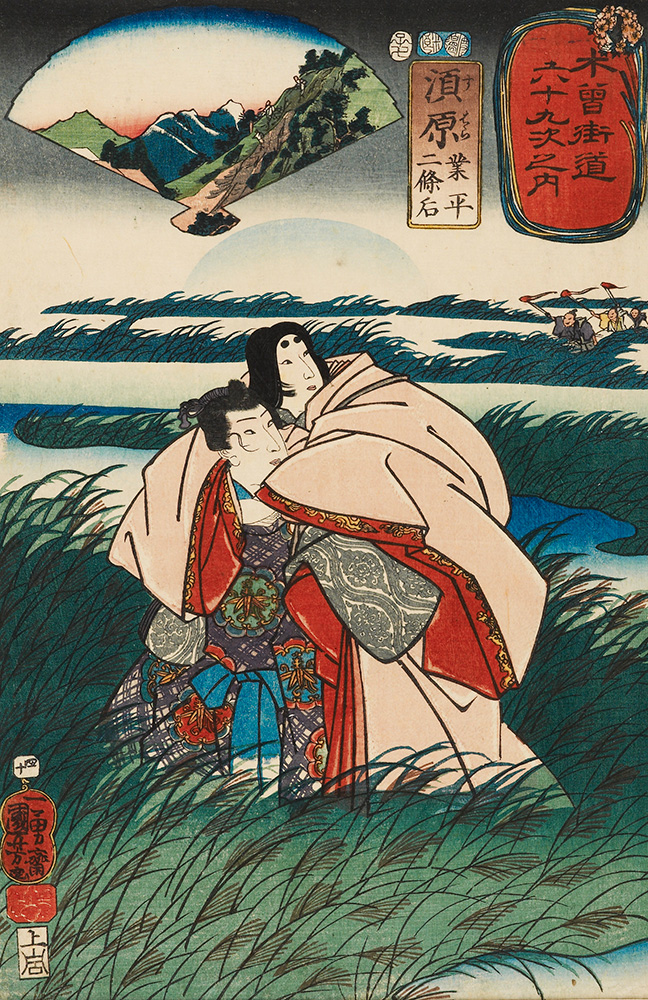
This striking colour woodblock print shows the lovers Ariwara no Narihara and Lady Nijō eloping. They flee across the Musashi Plain, famous for its moonrise, and here a giant moon is shown rising behind the moor against a soft blue sky.
The pair glance back at their torch-wielding pursuers, likely Lady Nijō's brothers. The print is inspired by a famous episode from the 10th-century poetic anthology the 'Tales of Ise'.
Utagawa Kuniyoshi was one of the last great masters of the Japanese ukiyo-e style of woodblock printing. He is probably best known for his prints of warriors and battles of legendary heroes, but also created designs of ghosts, cats, beautiful women, actor prints and landscapes.
Kuniyoshi was born in Edo (modern-day Tokyo) in 1798 and in 1811 he began an apprenticeship at the Utagawa school of printmakers, under the leadership of the celebrated Utagawa Toyokuni I (1769-1825). He remained in Toyokuni’s studio until 1814 when he set up on his own and was given the artist name Kuniyoshi.
Not currently on display.
The Knight's Farewell
By Sir Edward Coley Burne-Jones, 1858
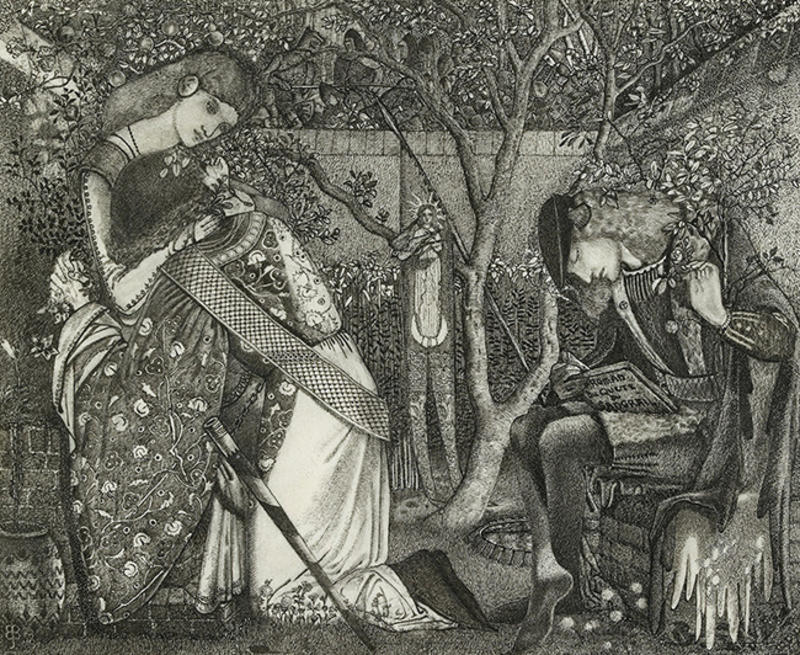
In 1858, the Pre-Raphaelite artist Edward Burne-Jones made a series of pen and ink drawings, all on the theme of lovers having to part as the men leave for battle. This one is on vellum, as used by makers of medieval illuminated manuscripts.
The amount of detail is extraordinary: the apple tree, rose bushes and tall lilies of the enclosed garden are indicated with a multitude of tiny pen strokes.
The drawing contrasts the anguish of the knight on the left, who clasps his love before joining his comrades beyond the walled garden, with the calmness of the young man on the right who only reads about battles in his ‘Roman du Quete du Sangrail’ – the story of the quest for the Holy Grail, from Malory’s 'Morte d’Arthur'.
See it by appointment in the Western Art Print Room.
Lovers Listening to Music
By Elizabeth Siddal, 1854
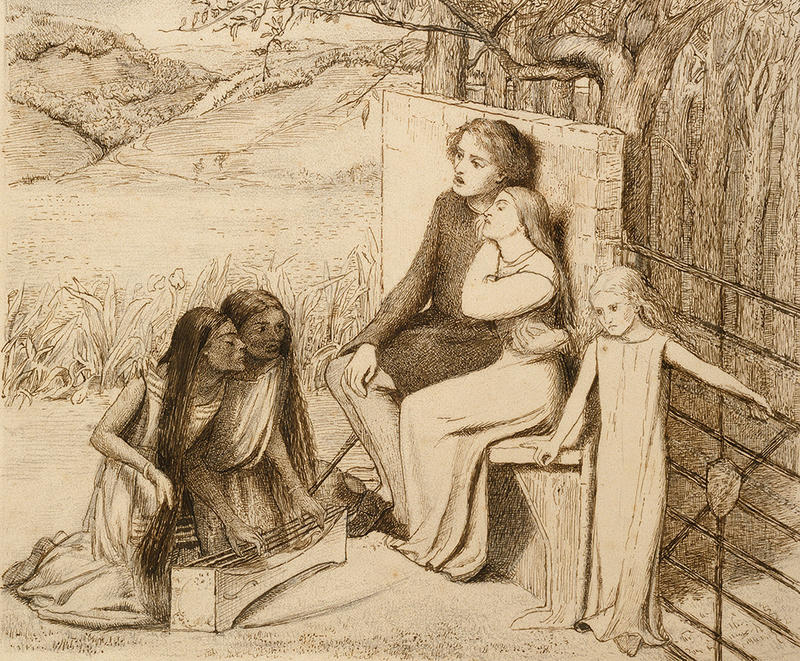
The landscape in this enigmatic drawing evokes the countryside around Hastings where Elizabeth 'Lizzie' Siddal and Dante Gabriel Rossetti spent a summer holiday in 1854. It was to Hastings, too, that the two artists went to get married in 1860.
Elizabeth Eleanor Siddal (1829–1862) was one of the so-called Pre-Raphaelite 'stunners', but was an artist herself and remarkable as a working-class woman, for her time, in her intention to become a professional painter. She shared a Pre-Raphaelite passion for literature, writing her own poetry and choosing literary subjects for her pictures.
Lizzie entered the Pre-Raphaelite circle in 1849 or 1850, having been spotted – according to legend – by Walter Deverell while working in a hat shop in Leicester Square in London. She went on to produce over 100 works of art in her short and tragic life.
See it by appointment in the Western Art Print Room.
Read more about the Pre-Raphaelite 'stunners' and Lizzie Siddal



